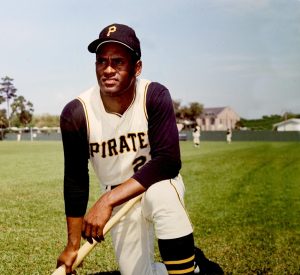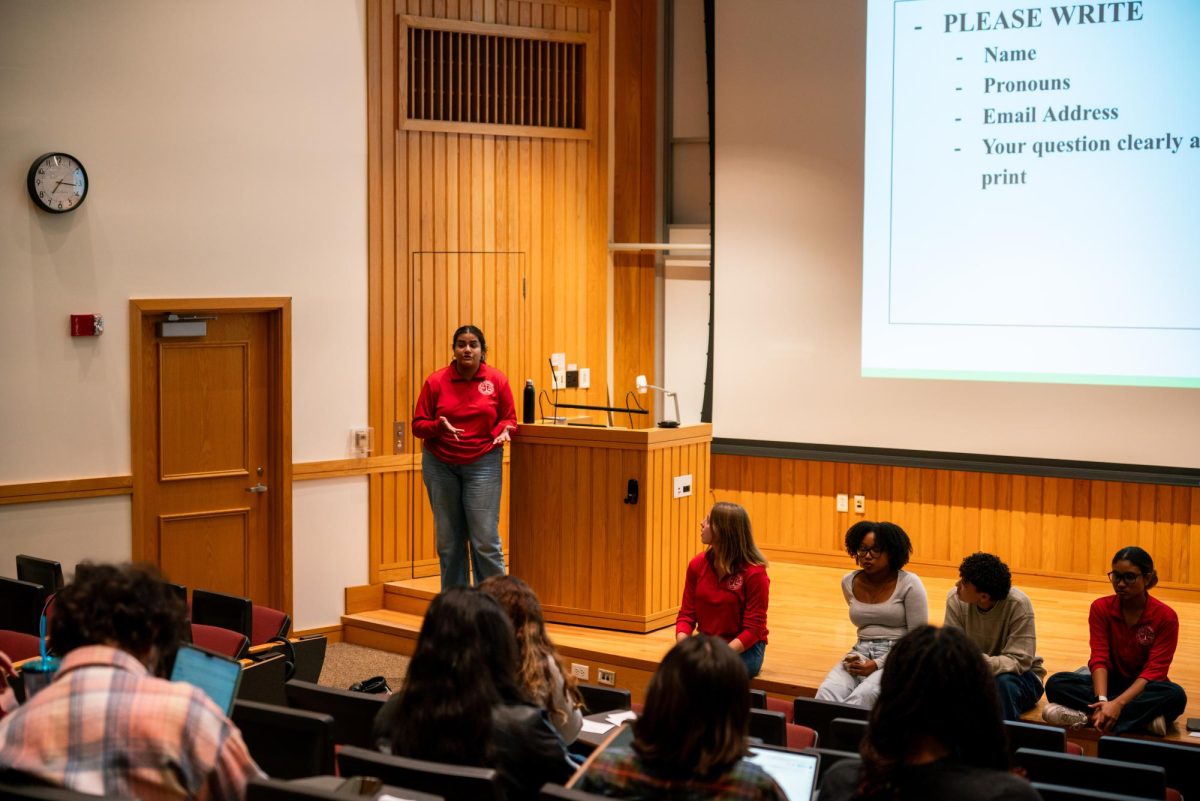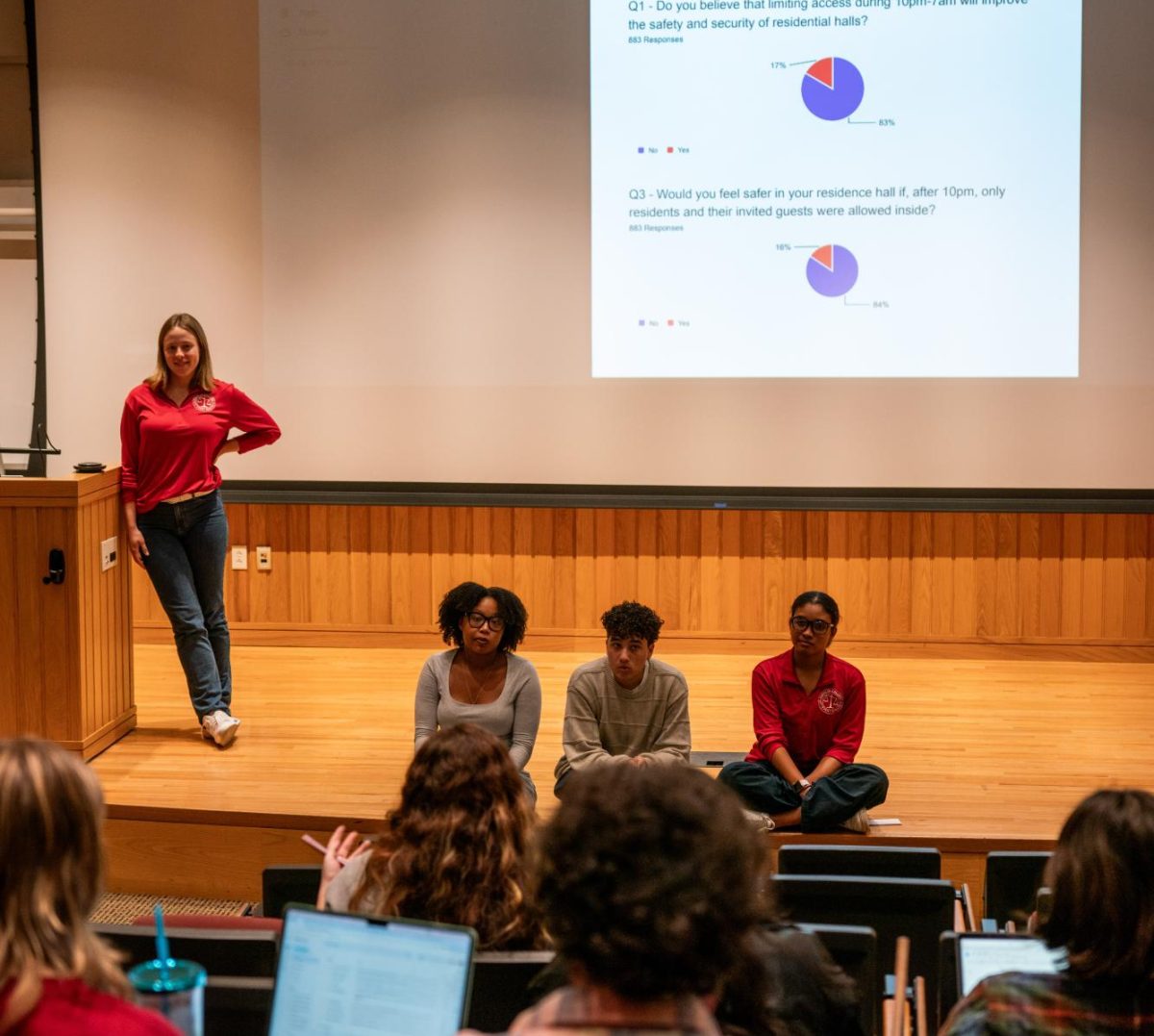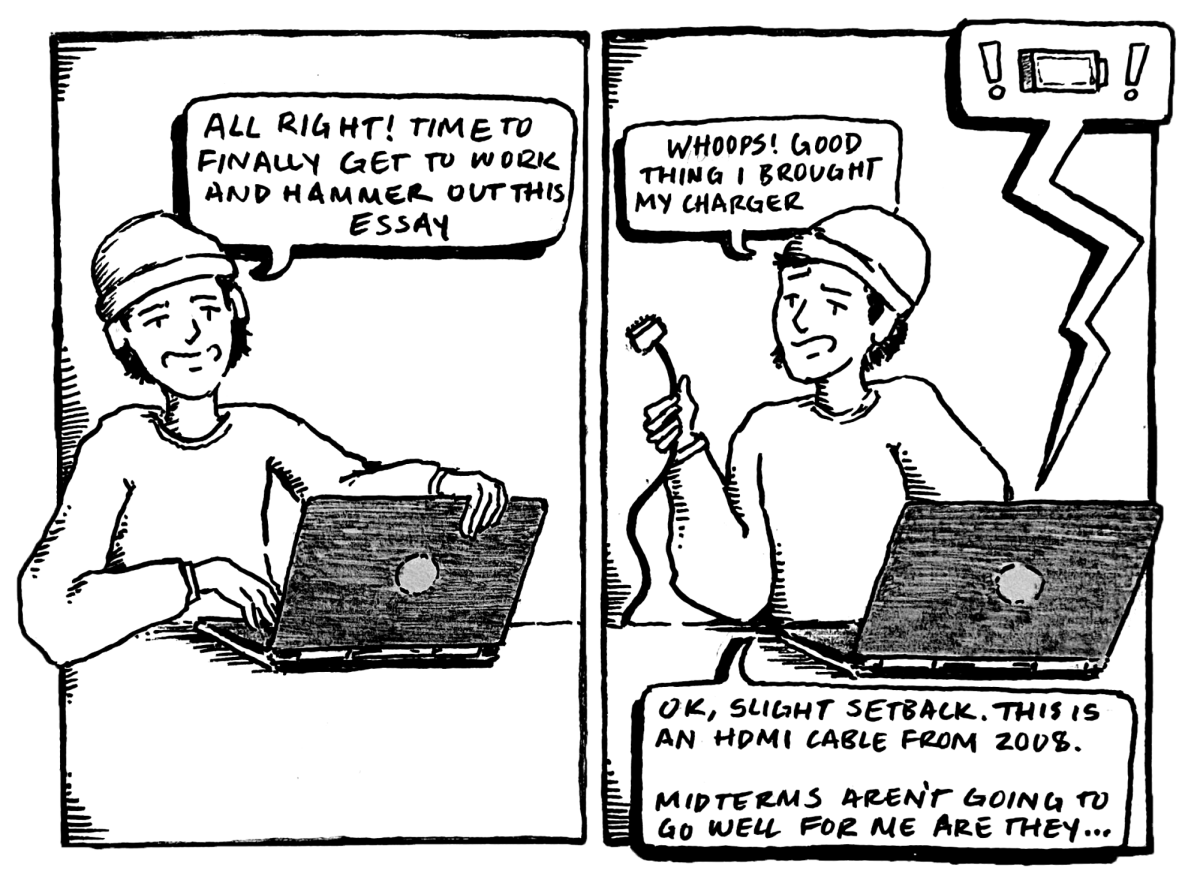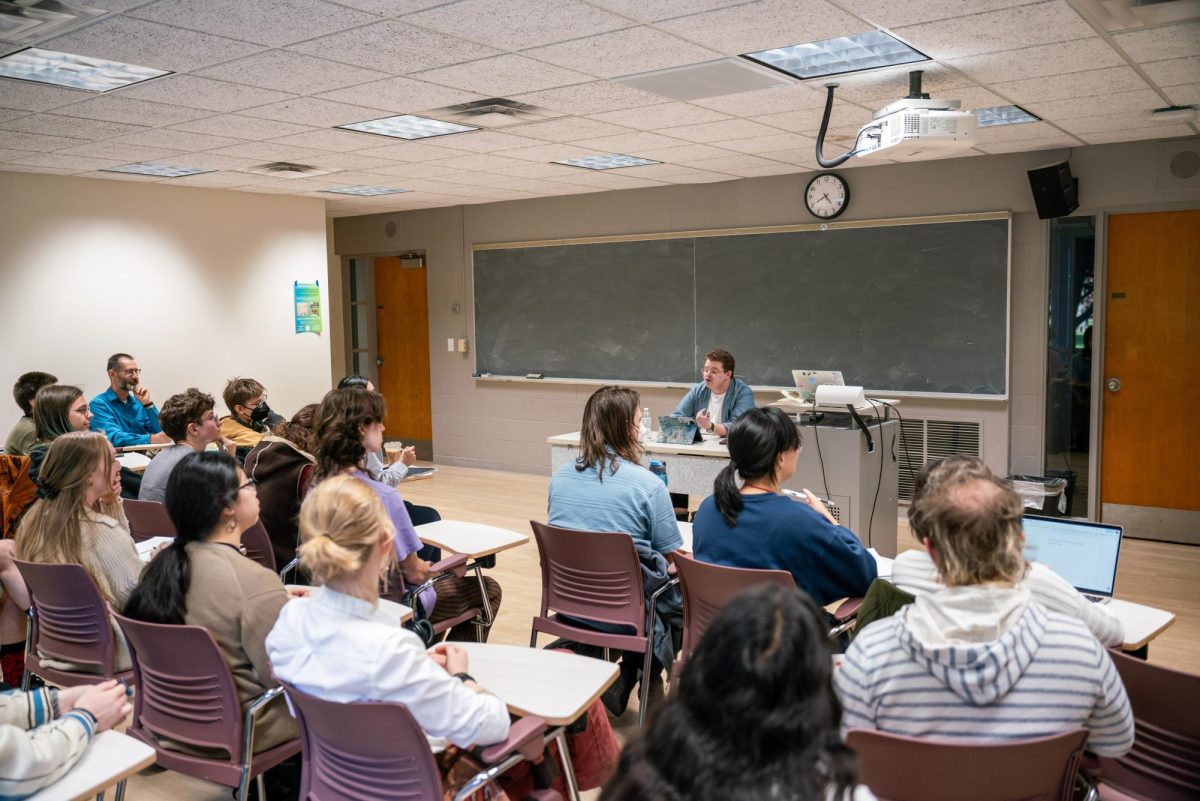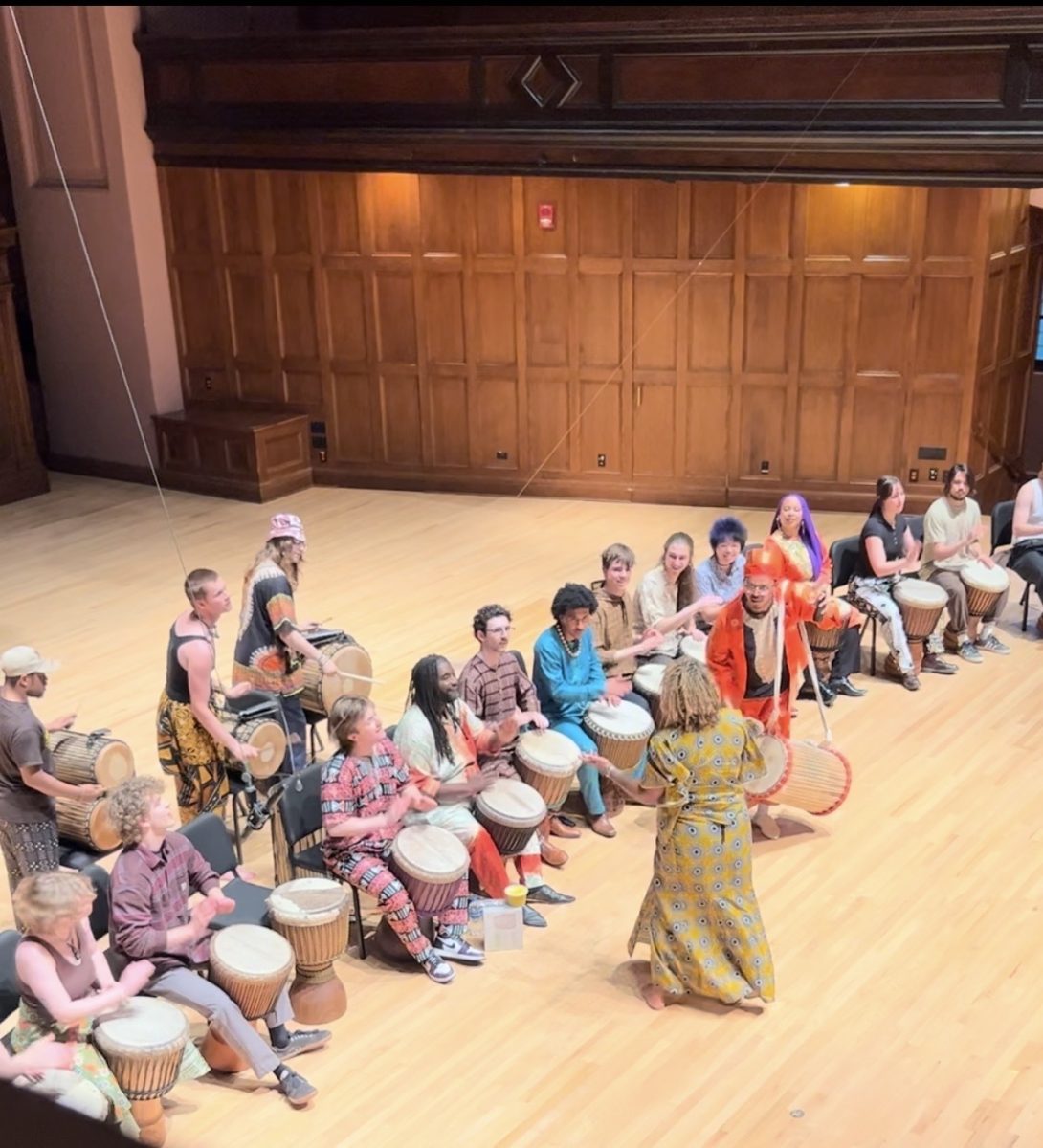British Pop Art Icon Proves to be Inspirational, A Riot
September 28, 2012
On Tuesday, the well-known pop artist Derek Boshier visited Oberlin to critique several student artists’ works and to give a lecture about his life and career. Boshier attended the Royal College of Art in London with famous artists such as Allen Jones and Peter Phillips, as well as David Hockney, who was in several of Boshier’s photographs from their student years. A central figure of the British pop art movement, the artist supplemented his lecture with a slideshow of over 150 images and several films he created in the 1970s. Boshier’s racy sense of humor allowed him to connect with students in the audience, making them laugh over and over again. As the lights dimmed, he said that the lecture was based on how he “got from where [the students] are, to where [he is].”
Starting with his education in London, where he was trained as a painter alongside other important pop artists, Boshier described the intense practice, constant drawing and high standards he and fellow students were expected to maintain. He joked about having to learn every single muscle in the human body, telling his audience that he still remembers a lot of it.
The artist showed photos of a great number of his works, explaining what inspired the pieces and how they were created. One of his first pop art paintings, “Situation in Cuba” (1961), a response to the Cuban Missile Crisis, depicts an American flag impinging on a Cuban flag. Another, “The Identi-Kit Man” (1962), is a commentary on advertisements and the subconscious manipulation we all go through on a daily basis. Boshier described his technique of morphing one thing into another and how it has followed him for his entire career: “When I think about it,” he laughed, “I’ve been painting the same thing for 50 years.”
Boshier’s biggest claim to fame is his soiree with rock and roll beginning in the early 1960s. His abstract painting “Re-Think/Re-Entry” (1962) and its name were the inspiration for the title of an early Roxy Music song called “Re-Make/Re-Model.” This opened the door for an enduring relationship with David Bowie, who commissioned Boshier to design the cover of his 13th studio album, Lodger, in 1979. That same year, Boshier was approached by lead guitarist and vocalist of the Clash, Joe Strummer, a friend of one of Boshier’s former students, and was asked to design a music book. Music books, a pre-MTV relic, are extremely stylized and break away from painting, relying more on drawing and collage to achieve a grungy effect. Boshier always returns to drawing and frequently strays away from painting to explore different media.
Derek went on to show the room a series of photographs he took in 1971 called “16 Situations.” The series revolves around a singular object, two metal rectangular prisms that fluctuate in size and location. Boshier’s photograph editing skills are impressive for a pre-Photoshop world, as the object did not exist in any of the situations he photographed, but instead was added later. One photograph was set in the Whitney Museum of American Art, while one was placed in a Japanese residential setting and another took the place of an alarm clock in an old advertisement.
Boshier’s memory is impeccable, and his stories are told as if they happened yesterday. David Bowie once came to his New York studio in 1980 while he was acting in the play The Elephant Man. Boshier recalled that it was so hot out that day that Bowie immediately took off his shirt and hung it on a chair, then stood topless for him to paint while posing in the position of the Elephant Man.
Boshier spoke for roughly two hours before breaking for 10 minutes so students could grab dinner. Unfortunately, almost nobody returned from the dinner break, leaving only five or six students left in the lecture. The reduction of class size led to a much more intimate discussion and screening of three films by Boshier. The first and second films were very conceptual, with fast flashes of different shapes, a comment on both minimalism and subliminal advertising.
The third film had not been touched since 1974 and was only recently rediscovered by Boshier. He shared with the smaller group that at first he strongly disliked the film and threw it into storage. Now, 38 years after the fact, it’s back.
Boshier was very excited about his website, www.derekboshier.com, and encouraged attendees to check it out in their spare time. It has a small selection of all periods of his work, as well as video files of the three film clips he presented at the lecture. Derek Boshier is a rare type, an artist who has witnessed some of the most radical and exciting art in the past 100 years and, what’s more, actually made some of it. His clear outlining of the journey that begins in school and ends with becoming a pop art legend was an inspiration to the attendees, many of whom study and practice art in one form or another. One can only imagine one’s own artist lecture 50 or 60 years from now, perhaps laden with Facebook photographs taken with peers who might become Hockneys and Boshiers themselves.





